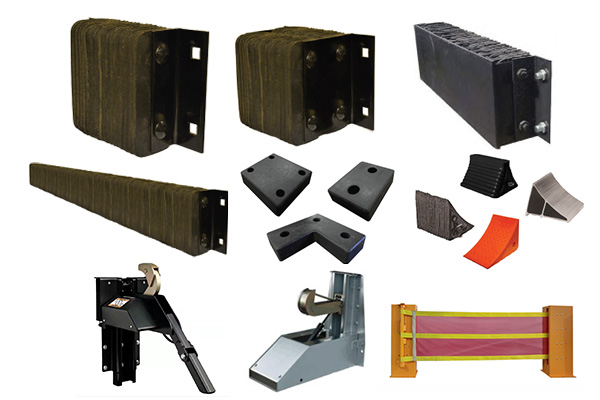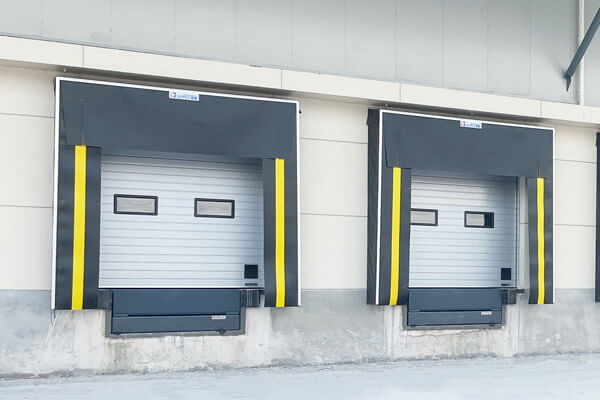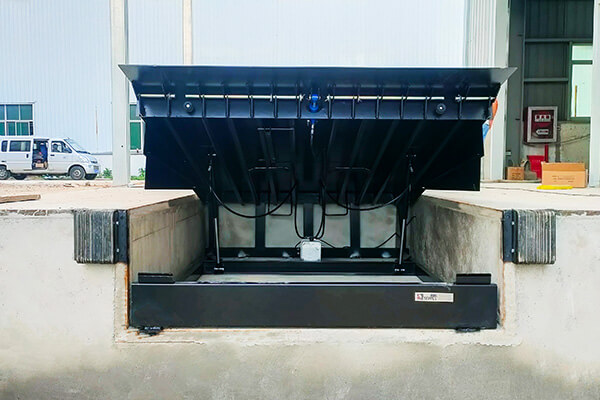Mon - Sat : 9am to 7pm Sunday is CLOSED

Rubber dock bumpers are installed on both sides of the loading dock leveler. Primarily designed to block trucks from hitting directly on top of the loading platform, the bumpers protect the vehicle and the loading dock structure from impact damage. Although it is just a small piece of rubber dock bumpers, the role of bumpers is very powerful. In this article, we’ll cover rubber dock bumpers and the importance, types available, and selection tips.
The industrial sites that I have visited before were not fitted with crash blocks for the dock levelers because they were not fitted with them. Trucks day after day collision, resulting in the pit of the surrounding civil engineering and angle iron are all broken. This left the loading dock leveler without direct support and severely damaged at a later stage.
Contents
- 1 Guide Overview About Rubber Dock Bumpers
- 2 What are Rubber Dock Bumpers
- 3 Why are Rubber Dock Bumpers Important?
- 4 Types of Dock Bumpers And Features
- 5 How to Choose the Right Loading Rubber Dock Bumpers Strips
Guide Overview About Rubber Dock Bumpers
In this guide, you’ll find everything you need to get started with loading rubber dock bumpers, including
- What rubber dock bumpers are and why they are important.
- The different types of dock rubber bumpers and how they work.
- Tips, tools and best practices for choosing and maintaining a dock rubber bumper.
What are Rubber Dock Bumpers
Loading dock bumpers, which are generally made of high-strength, abrasion-resistant rubber material. The purpose is to absorb the impact energy of a truck while docked at a pier. Bumpers are able to perform their cushioning role and reduce the intensity of the impact, thus protecting platforms, trucks, and cargo from damage and prolonging the lifespan of loading dock equipment.
Rubber dock bumpers are protective cushions made of durable materials, usually rubber, designed to absorb the impact energy of trucks while docked. They prevent structural damage to docks and vehicles, extending the life of loading dock equipment.

Why are Rubber Dock Bumpers Important?
Cushioning protection
Warehouse dock bumpers provide cushioning protection for incorrectly parked vehicles. During loading and unloading, freight vehicles will not crash into the walls of the building, reducing the intensity of the impact. Without dock bumpers, it would hit the wall, concrete platform or dock leveler directly, causing damage to the platform or the lorry.
Facilitates dock leveler operations
Bump stops also ensure that a constant distance is maintained between the lorry compartment and the loading platform. Regardless of the size of the wagon, the distance from the wagon to the loading dock leveler remains constant as long as the wagon is backed up against the bumpers. This feature not only facilitates the up and down adjustment of the platform fixing, but also greatly improves the cargo handling efficiency.
Wide range of uses
Loading dock buffers can be used in a variety of industrial locations or commercial due to their versatility and durability. Examples include warehouses, manufacturing facility docks, shopping centre warehouses, food factories, logistics parks, etc.
Cost Saving
The installation of rubber dock bumpers can extend the life of the equipment by reducing the damage caused by impacts. It greatly reduces the cost of repairs and maintenance for businesses and industries.

Types of Dock Bumpers And Features
Extra Long Rubber Bumpers
Some customers require long dock bumpers that are installed across the entire one horizontal bar of the dock leveler. This can be customized more to the size of the doorway where it is to be installed. Extra long rubber dock bumpers can help lorries reverse and stop more accurately. For refrigerated docks and open loading docks, the extra long dock bumper can cover the entire dock. It can also be used as a bottom seal for dock doors.
Applications and Features
- Refrigerated terminals
- Open loading docks
- 4.5‘ to 6’ thick
- Lengths up to 123 inches
- Available in corner or flat panels
Extra thick rubber dock buffers
For use on loading docks with downhill access. Designed to maximize impact absorption.
Applications and features
- Docks with drop aisles
- 8‘ to 12’ thick
- Lengths up to 36
- Available in angle or flat plate
Laminated rubber dock bumpers
It is made from multiple layers of recycled rubber.Dock provides excellent impact resistance for heavy duty use
Molded rubber dock buffers
Made from heavy duty molded rubber for specialized equipment such as dock levellers or open loading docks. Ideal for medium duty docking operations.
Applications and Features
- Dock leveller
- Light Dock
- Open Loading Docks
Truck restraints
Near the edge of the hydraulic dock leveler. Truck restraints used to hold the lorry in place while it reverses close to the dock leveler.
Applications and features
- Between loading dock leveler and lorry
- Speeds up loading and reduces disruption caused by lorry movement
- Hooks catch the rear bumper or bracket of the lorry
- Reduces the risk of accidents
Steel Faced Dock Bumper
Reduces excess wear from trailer float while handling heavy loads or air ride trailers. Models in stock ready to ship.
Applications & Features
- Docks receiving air ride trailers
- Oversize forklifts
- Heavy loads
- 5 year warranty
- 3/8″ thick steel face plate
- Available with angles or flat plates
There are several types of warehouse dock buffers, each suited to a specific application. For a more detailed breakdown, you can refer to the comprehensive guide to dock bumpers types provided in this article.

How to Choose the Right Loading Rubber Dock Bumpers Strips
Brand and quality
Choose a well-known brand and quality-assured rumble strips so that you can reduce the risks caused by product quality issues. Check the quality test reports and certifications of the product to ensure that it meets the relevant standards and regulations. At the same time, confirm the warranty time of the crash bar with the merchant and replace it in time if it is broken.
Confirm your docking needs
Confirm the size and docking frequency of the transport vehicle, as well as the transport weight. Ensure that the crash bar can withstand the impact of the trucks docking at the dock. Take careful measurements to ensure they match your dock specifications.
Material of Bump Strips
Dock rumble strips are usually made from elastomeric materials such as rubber and polyurethane, which have good impact and abrasion resistance. Depending on the specifics of your dock and the environment in which it will be used, choose the right material to ensure that the rumble strips can be used effectively for a long period of time.
Size and Specification
According to the size and shape of the dock, choose the appropriate size and specification of the anti-bumping strip. Ensure that the strips can closely fit the surface of the dock, leaving no gaps and improving the anti-collision effect.
Installation and Maintenance
Consider the installation method of the crash bar to ensure that it is easy and quick to install, and at the same time has a certain degree of solidity. Understand in detail the maintenance requirements of crash bar, so that it can be maintained and replaced in time during use. This will help to extend the service life.
Price and cost-effective
Compare the price of different brands and models of crash bar, choose the more cost-effective products. Pay attention to avoid too much pursuit of low price and ignore product quality and performance.
After-sales service
Choose a brand with a perfect after-sales service system. So that problems encountered in the process of use can be resolve in a timely manner.
More reference business
In the purchase process, you can also refer to the evaluation and feedback of other users to understand the actual use of the product. At the same time, according to the specific needs and characteristics of the dock, you can consult professionals or manufacturers to get more specific advice and solutions.
When choosing dock bumpers. You need to comprehensively consider factors such as brand, quality, material, size, installation and maintenance, price and cost-effective and after-sales service to ensure that you buy the right product.
